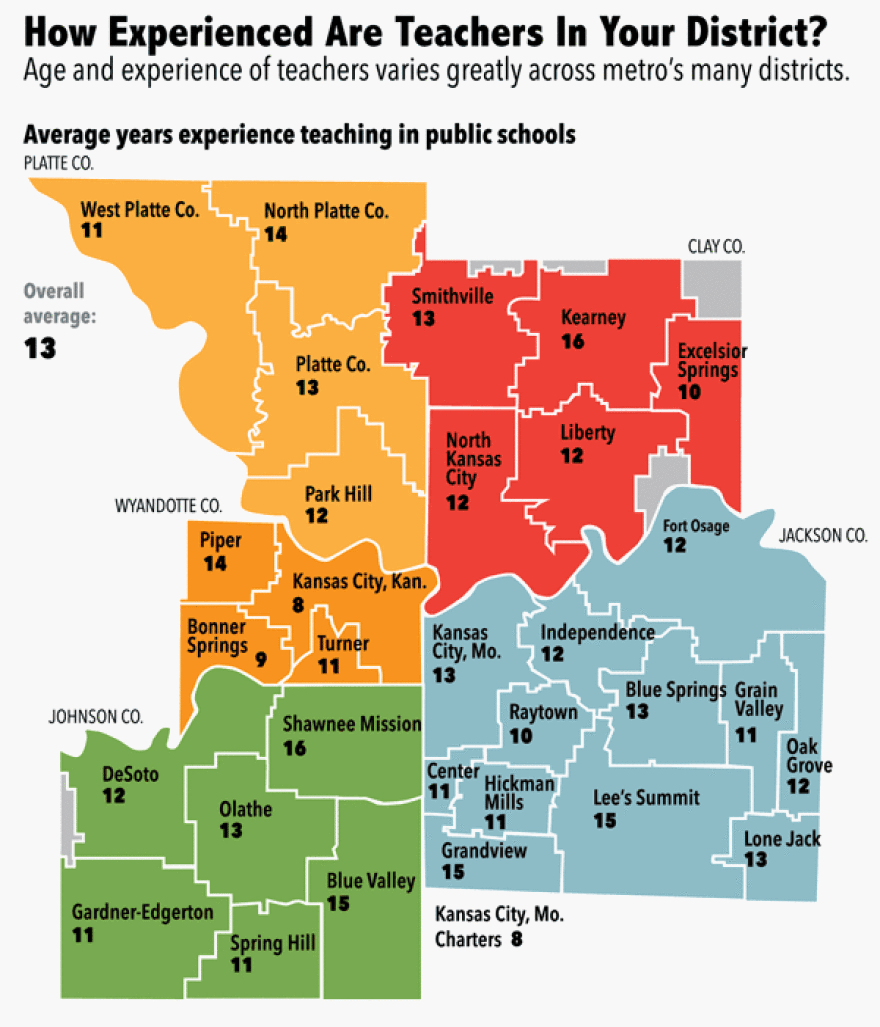Around the Kansas City metro, there are roughly 20,000 public school teachers in more than 50 districts and charter schools, teaching more than 300,000 students.
Broadly speaking, the metro reflects statewide trends in both Kansas and Missouri that show teachers are steadily getting younger and less experienced. Both states have two of the youngest, least experienced teacher workforces in the country, according to the most recent federal data.
This local shift comes as teachers across the nation have gradually declined in experience levels since the mid-1980s.
Dr. Mark Ehlert, an Economics professor at the University of Missouri, helps run the Kansas City Area Education Research Consortium (KC AERC) and says the metro "reflects much of the country" in its representation of student demographics and school types.
"We have suburban schools, urban schools, rural schools. It is a very unique place with all these things going on, so it's an interesting place to study," he says.
KCUR combed through a decade's worth of data compiled by Ehlert and his colleagues at KC AERC and also looked closely at the latest staffing and retention data from both the Missouri Department of Elementary and Secondary Education, or DESE, and the Kansas State Department of Education, or KSDE.
In addition, KCUR reviewed the most recent federal Schools and Staffing Survey (SASS), which was completed in 2012.
Through that work, we were able to compile the most current snapshot of teacher experience level across the five-county Kansas City metro.
First, we broke districts (and the more than 20 charter schools in Kansas City, Missouri) down by the average years of experience of their teachers.

Then, by the percentage of teachers in each district (and the average of Kansas City charter schools) that have less than five years experience teaching in public schools.

Also, the percentage of teachers who have a Master's degree in each district (Kansas City charter schools are, again, averaged together.)

Looked at collectively, this data reveals some broader trends. Districts that generally have higher rates of family poverty (as measured by multiple federal measures) and higher percentages of minority students are more likely to have younger, less experienced teachers with lower rates of advanced degrees. These numbers reflect national trends.
Some researchers suggest these teacher demographic numbers are affected by higher teacher attrition in urban districts. In fact, research shows the 'burnout' of new teachers is higher in districts that have higher poverty rates.
KCUR intern Julia Szabo contribtued to this report.
This story is part of 'Teaching It Forward', KCUR's ongoing look at the changing nature of the teaching profession in Kansas City. For more stories like this one, find the 'Teaching It Forward' tab under 'Special Projects' on the main page of kcur.org.




